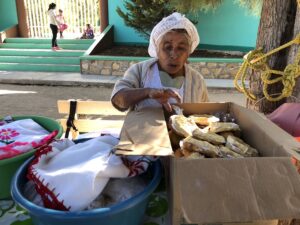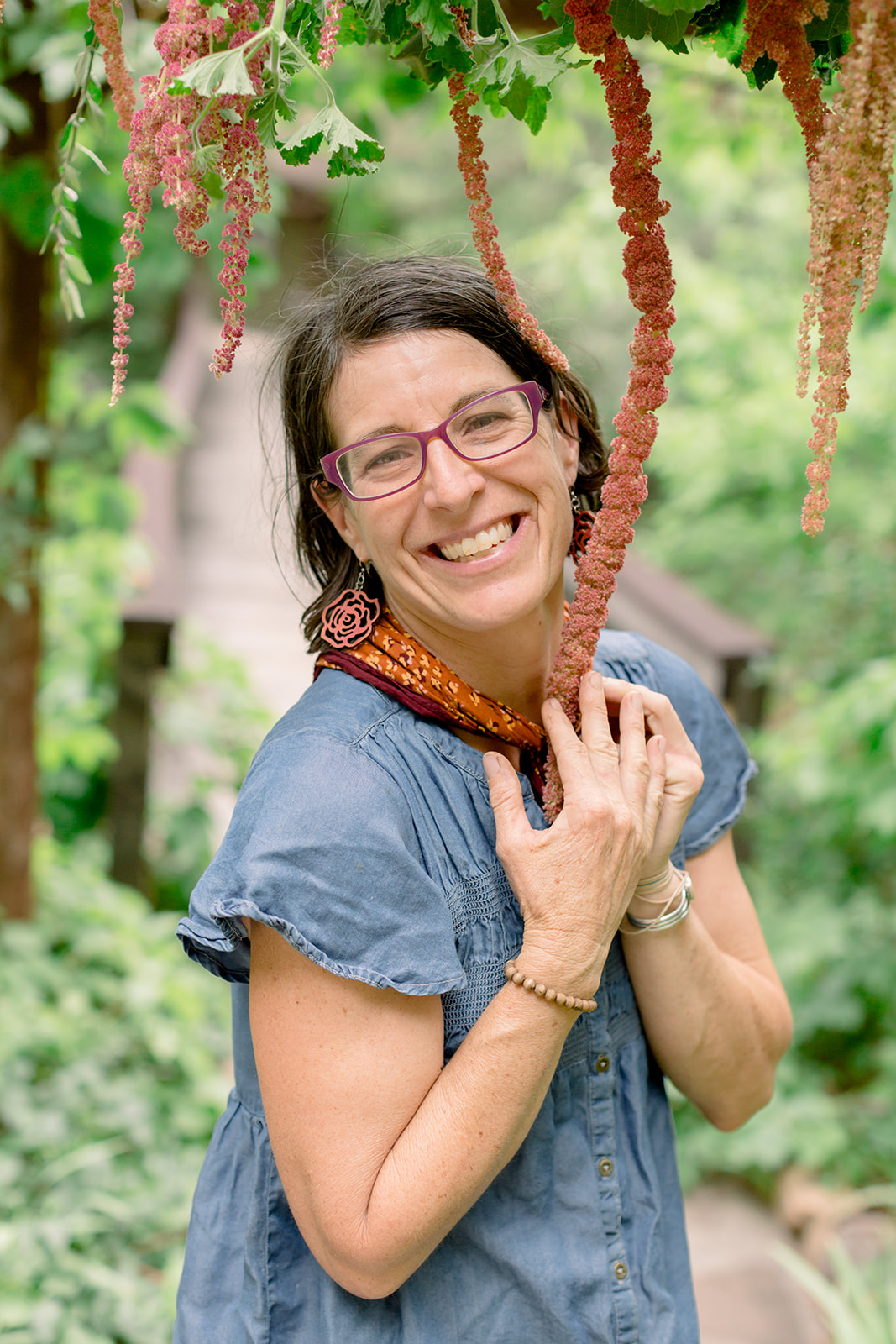 The full buck moon rose bright enough to illuminate clouds from an afternoon monsoon burst. The corn fields at our farm shimmered with beauty and aliveness; the sheer will and life force of these plants drawing me in. Although is only their third full moon, they have now surpassed me in height. This corn field is full of green arrows of purpose on a mission to make another generation.
The full buck moon rose bright enough to illuminate clouds from an afternoon monsoon burst. The corn fields at our farm shimmered with beauty and aliveness; the sheer will and life force of these plants drawing me in. Although is only their third full moon, they have now surpassed me in height. This corn field is full of green arrows of purpose on a mission to make another generation.
Everything has a beginning and an end, yet with seeds, the arc of time is expansive.
Seeds hold multitudes of stories within them. This soil remembers corn from indigenous ancestors who planted seeds on this land just downstream of Montezuma’s Well over 1000 years ago. I will never know all the people who had a hand in the mutual survival of the corn varieties I am growing this season, but I
will introduce you to a few.
In January of 2018 I traveled to Oaxaca, Mexico with farmer friends Yunuel and Chelsea. The trip evolved into a food, farm and seed pilgrimage that led me deep into the origin story of corn. Just hours after arriving in Mexico City at Yunuel’s tiny apartment, we were off to the Basilica of Our Lady of Guadalupe. The miraculous image of her appearance 500 years ago on Aztec farmer’s Juan Diego’s tilma or cloak, shows no sign of decay. The story of Guadalupe has fascinated me for decades and her image signifies love and resilience. I lit a candle from an existing flame and placed it among the individual prayers, forming a long wall burning from colorful votives. Yunuel said they recycle the wax for the candles—one eternal, collective flame. I joined a circle of reverence with other pilgrims to keep hope burning.
 Yunuel helps grow equitable food systems in Mexico, and is a mother and gardener. Chelsea grew up in Georgia as the 5th generation on her family’s farm and carries on the tradition of saving seed from these varieties. The seed for our Mexico trip was planted while we were apprentices at U.C. Santa Cruz Farm. Yunuel, homesick for Mexico, made corn tortillas for our cohort of 40 apprentices from the corn we grew that season. Chelsea fed us bread she baked in a wood-fired oven infused with hand-processed corn brought with her in pillowcases. I brought blue corn seed given to me by Navajo farmers at North Leupp Family Farm, and grew a small patch near Chelsea’s corn, so our enthusiasm mingled a bit then. At the end of the season I returned to Arizona with a pillowcase of California-grown Navajo blue corn and curiosity and reverence for this amazing plant.
Yunuel helps grow equitable food systems in Mexico, and is a mother and gardener. Chelsea grew up in Georgia as the 5th generation on her family’s farm and carries on the tradition of saving seed from these varieties. The seed for our Mexico trip was planted while we were apprentices at U.C. Santa Cruz Farm. Yunuel, homesick for Mexico, made corn tortillas for our cohort of 40 apprentices from the corn we grew that season. Chelsea fed us bread she baked in a wood-fired oven infused with hand-processed corn brought with her in pillowcases. I brought blue corn seed given to me by Navajo farmers at North Leupp Family Farm, and grew a small patch near Chelsea’s corn, so our enthusiasm mingled a bit then. At the end of the season I returned to Arizona with a pillowcase of California-grown Navajo blue corn and curiosity and reverence for this amazing plant.

The oldest corn was found in caves in Oaxaca 6,000 years ago, the result of cross-breeding by indigenous people f
rom a wild, grass-like grain called teosinte. We followed corn kernels to museums, markets and libraries for a week before a chance meeting led us to farmers actually growing corn. Yunuel left her phone at a restaurant and when she returned, a man was sitting at our table reading a Mexican agriculture book. After a short conversation, this man, Rícardo, a Mexican anthropologist studying Oaxacan corn genetics, connected us with Pedro, from Santa Catarina Quiané, outside of Oaxaca City.
We met Pedro at the Tianguis Gastronómico, literally translated as gastronomic market. Tianguis is derived from a Nahuatl or Aztecan word for market, which is an ancient tradition in Mexico. The experience was a heartfelt culinary and sensory feast that I will never forget. Everything was derived from corn — an atolé drink, a corn pudding, handmade corn tortillas filled with pit-roasted goat barbacoa, and, of course, tamales. Pedro’s adorable and sassy abuelita (grandmother), stood less than four feet tall behind a pile of tamales. She explained the process of how they were made with corn from her husband, Abel’s milpa (a corn field often planted with beans and squash) and invited us to her casa and ultimately to make tamales with her (which is another story).
Abel walked with a cane and wore a wrangler shirt and his backyard had a pile of corn the size of a truck. Piles of corn and winter squash under simple cement block awnings is a common phenomenon in this village. This is where people hang out, chat and poco a poco process corn. Abel demonstrated the tools he made for shelling corn from the cob. One was old-school—using the spent cobs lined up like cobblestones. A more modern method is a board lined with u-nails used to scrape the kernels off. I remembered my blue corn pillowcase, languishing on cobs in my closet. It is tedious to remove the dried kernels, nixtamalize (a process in which dried kernels are cooked and steeped in an alkaline solution), then grind into a masa to make tortillas, or tamales. Here it is just a joyful activity you do with your family and neighbors.
I brought many things home to remember my experiences in Oaxaca—including an embroidered market apron, a rug dyed and woven by one of my hosts, and a feast of colorful photographs; but the day spent shelling corn and making tamales continues to enrich my farming life four seasons later. The trip seeded something inside of me that continues to grow and no doubt led me to find this land in 2020 and begin a life in place. Mexican farmers showed me the possibility of a livelihood based on having what you need, living in community and making and growing with your environment.
 On a near full moon in the corn fields at Wild Heart Farm, we lit dozens of candles in tall votives left from a recent wedding, reminiscent of those burning for the Virgen, whose statue overlooks the fields. Abel’s corn is now three seasons removed from its Mexican homeland and grows with other corn seeds, with different stories, together with the dream of a Rimrock tortilla corn to feed us and generations to come.
On a near full moon in the corn fields at Wild Heart Farm, we lit dozens of candles in tall votives left from a recent wedding, reminiscent of those burning for the Virgen, whose statue overlooks the fields. Abel’s corn is now three seasons removed from its Mexican homeland and grows with other corn seeds, with different stories, together with the dream of a Rimrock tortilla corn to feed us and generations to come.

